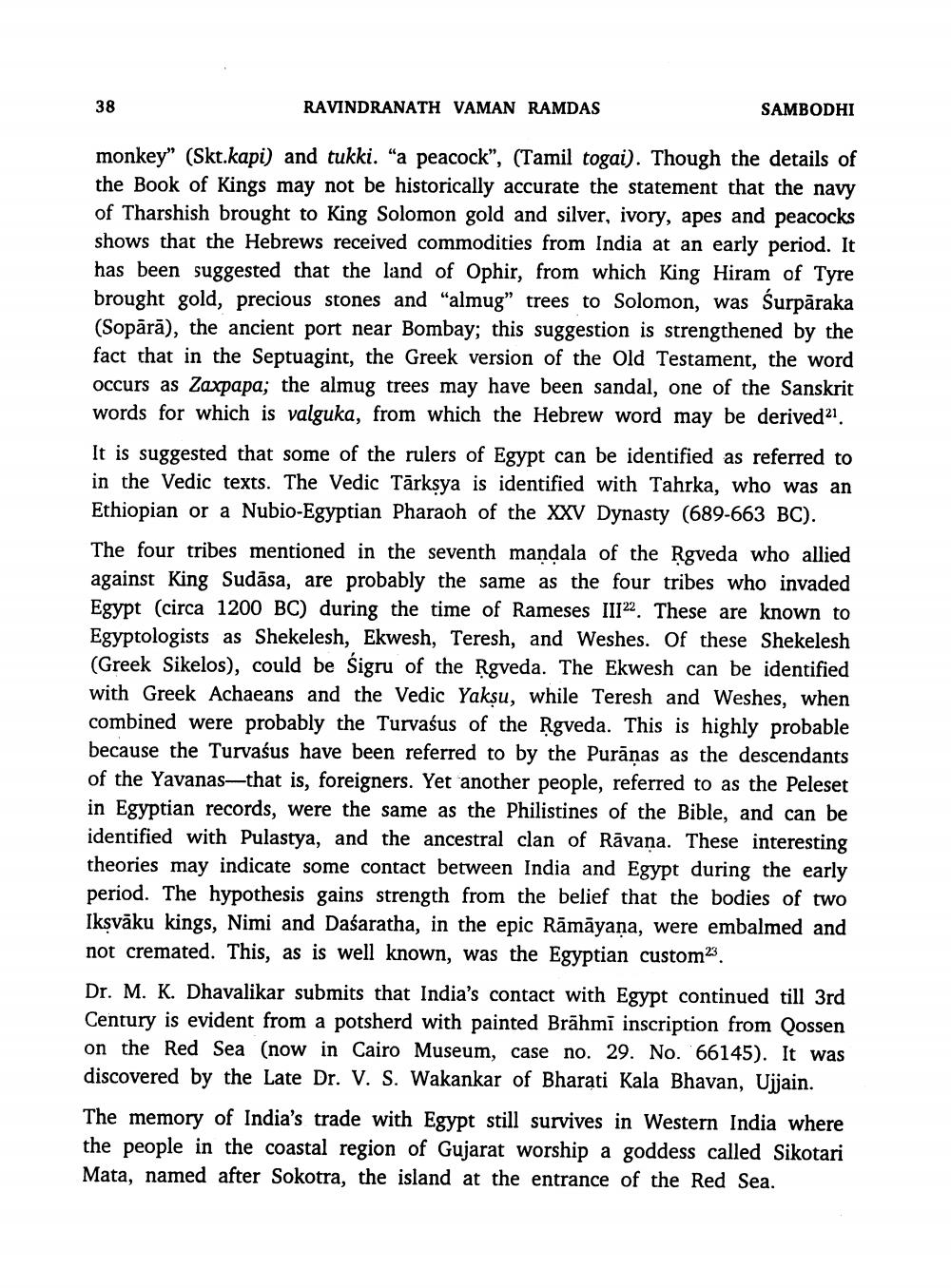________________
38
RAVINDRANATH VAMAN RAMDAS
SAMBODHI
monkey" (Skt.kapi) and tukki. "a peacock", (Tamil togai). Though the details of the Book of Kings may not be historically accurate the statement that the navy of Tharshish brought to King Solomon gold and silver, ivory, apes and peacocks shows that the Hebrews received commodities from India at an early period. It has been suggested that the land of Ophir, from which King Hiram of Tyre brought gold, precious stones and "almug” trees to Solomon, was Surpāraka (Sopārā), the ancient port near Bombay; this suggestion is strengthened by the fact that in the Septuagint, the Greek version of the Old Testament, the word occurs as Zaxpapa; the almug trees may have been sandal, one of the Sanskrit words for which is valguka, from which the Hebrew word may be derived21 It is suggested that some of the rulers of Egypt can be identified as referred to in the Vedic texts. The Vedic Tārksya is identified with Tahrka, who was an Ethiopian or a Nubio-Egyptian Pharaoh of the XXV Dynasty (689-663 BC).
The four tribes mentioned in the seventh mandala of the Rgveda who allied against King Sudāsa, are probably the same as the four tribes who invaded Egypt (circa 1200 BC) during the time of Rameses II122. These are known to Egyptologists as Shekelesh, Ekwesh, Teresh, and Weshes. Of these Shekelesh (Greek Sikelos), could be sigru of the Rgveda. The Ekwesh can be identified with Greek Achaeans and the Vedic Yaksu, while Teresh and Weshes, when combined were probably the Turvaśus of the Rgveda. This is highly probable because the Turvaśus have been referred to by the Purāṇas as the descendants of the Yavanas—that is, foreigners. Yet another people, referred to as the Peleset in Egyptian records, were the same as the Philistines of the Bible, and can be identified with Pulastya, and the ancestral clan of Rāvana. These interesting theories may indicate some contact between India and Egypt during the early period. The hypothesis gains strength from the belief that the bodies of two Iksvāku kings, Nimi and Daśaratha, in the epic Rāmāyana, were embalmed and not cremated. This, as is well known, was the Egyptian custom23. Dr. M. K. Dhavalikar submits that India's contact with Egypt continued till 3rd Century is evident from a potsherd with painted Brāhmi inscription from Qossen on the Red Sea (now in Cairo Museum, case no. 29. No. 66145). It was discovered by the Late Dr. V. S. Wakankar of Bharati Kala Bhavan, Ujjain.
The memory of India's trade with Egypt still survives in Western India where the people in the coastal region of Gujarat worship a goddess called Sikotari Mata, named after Sokotra, the island at the entrance of the Red Sea.




